Thermally Bonded PET–Basalt Sandwich Composites for Heat Pipeline Protection: Preparation, Stab Resisting, and Thermal-Insulating Properties
Abstract
1. Introduction
2. Experimental Section
2.1. Materials and Methods
2.2. Measurements
3. Results and Discussion
3.1. Effects of Thermal-Bonded Time and Temperature on Knife Stab Resistance
3.2. Effects of Thermal-Bonded Time and Temperature on Spike Stab Resistance
3.3. Effects of Thermal-Bonded Time and Temperature on Burst Property
3.4. Effect of Thermal-Bonded Temperature on Yarn-Out Force
3.5. Effect of Thermal-Bonding Temperature on Thermal Conductivity
4. Conclusions
Acknowledgments
Author Contributions
Conflicts of Interest
References
- Zaki, G.M.; Al-Turki, A.M. Optimization of multilayer thermal insulation for pipelines. Heat Transf. Eng. 2000, 21, 63–70. [Google Scholar]
- Guo, F. Selection of heat insulation materials for thermal pipeline and analysis of problems. Shanxi Arch. 2017, 43, 196–197. (In Chinese) [Google Scholar]
- Hao, L.C.; Yu, W.D. Evaluation of thermal protective performance of basalt fiber nonwoven fabrics. J. Therm. Anal. Calorim. 2010, 100, 551–555. [Google Scholar] [CrossRef]
- Wei, B.; Cao, H.L.; Song, S.H. Degradation of basalt fibre and glass fibre/epoxy resin composites in seawater. Corros. Sci. 2011, 53, 426–431. [Google Scholar] [CrossRef]
- Subagia, I.A.; Kim, Y.; Tijing, L.D.; Kim, C.S.; Shon, H.K. Effect of stacking sequence on the flexural properties of hybrid composites reinforced with carbon and basalt fibers. Compos. Part B Eng. 2014, 58, 251–258. [Google Scholar] [CrossRef]
- Rambo, D.A.S.; de Andrade Silva, F.; Toledo Filho, R.D.; Ukrainczyk, N.; Koenders, E. Tensile strength of a calcium-aluminate cementitious composite reinforced with basalt textile in a high-temperature environment. Cem. Concr. Comp. 2016, 70, 183–193. [Google Scholar] [CrossRef]
- Bakare, F.O.; Ramamoorthy, S.K.; Åkesson, D.; Skrifvars, M. Thermomechanical properties of bio-based composites made from a lactic acid thermoset resin and flax and flax/basalt fibre reinforcements. Compos. Part A Appl. 2016, 83, 176–184. [Google Scholar] [CrossRef]
- Ahmad, Z.; Sirková, B.K. Tensile behavior of Basalt/Glass single and multilayer-woven fabrics. J. Text. Inst. 2017, 1–9. [Google Scholar] [CrossRef]
- Wu, H.J.; Fan, J.T.; Du, N. Thermal energy transport within porous polymer materials: Effects of fiber characteristics. J. Appl. Polym. Sci. 2007, 106, 576–583. [Google Scholar] [CrossRef]
- Fan, J.; Cheng, X.; Wen, X.; Sun, W. An improved model of heat and moisture transfer with phase change and mobile condensates in fibrous insulation and comparison with experimental results. Int. J. Heat Mass Tranf. 2004, 47, 2343–2352. [Google Scholar] [CrossRef]
- Zhu, F.L.; Li, K.J. Determining effective thermal conductivity of fabrics by using fractal method. Int. J. Thermophys. 2010, 31, 612–619. [Google Scholar] [CrossRef]
- Mohammadi, M.; Banks-Lee, P.; Ghadimi, P. Determining effective thermal conductivity of multilayered nonwoven fabrics. Text. Res. J. 2003, 73, 802–808. [Google Scholar] [CrossRef]
- Hasanzadeh, M.; Mottaghitalab, V.; Babaei, H.; Rezaei, M. The influence of carbon nanotubes on quasi-static puncture resistance and yarn pull-out behavior of shear-thickening fluids (STFs) impregnated woven fabrics. Compos. Part A Appl. Sci. Manuf. 2016, 88, 263–271. [Google Scholar] [CrossRef]
- Kordani, N.; Vanini, A.S.; Amiri, H. Numerical solution of penetration into woven fabric target impregnated with shear thickening fluid. Polym. Polym. Compos. 2016, 24, 281–287. [Google Scholar]
- Majumdar, A.; Laha, A. Effects of fabric construction and shear thickening fluid on yarn pull-out from high-performance fabrics. Text. Res. J. 2016, 86, 2056–2066. [Google Scholar] [CrossRef]
- Li, T.T.; Zhang, X.; Wu, L.; Peng, H.; Lou, C.W.; Lin, J.H. PET/Basalt stab resistant composite fabrics based on box-behnken design: Parameter optimization and empirical regression model. J. Sandw. Struct. Mater. 2018; in press. [Google Scholar]
- ASTM F1342. Standard Test Method for Protective Clothing Material Resistance to Puncture; ASTM International: West Conshohocken, PA, USA, 2005. [Google Scholar]
- ASTM D3787. Standard Test Method for Bursting Strength of Textiles-Constant-Rate-of-Traverse (CRT) Ball Burst Test; ASTM International: West Conshohocken, PA, USA, 2007. [Google Scholar]
- ASTM C 177. Test Method for Steady-State Heat Flux Measurements and Thermal Transmission Properties by Means of the Guarded-Hot-Plate Apparatus; ASTM International: West Conshohocken, PA, USA, 2013. [Google Scholar]
- Reiners, P.; Kyosev, Y.; Schacher, L.; Adolphe, D.; Küster, K. Experimental investigation of the influence of wool structures on the stab resistance of woven body armor panels. Text. Res. J. 2016, 86, 685–695. [Google Scholar] [CrossRef]
- Wang, L.; Zhang, S.; Gao, W.; Wang, X. FEM analysis of knife penetration through woven fabrics. CMES Comp. Model Eng. 2007, 20, 11–20. [Google Scholar]
- Li, T.T.; Wang, R.; Lou, C.W.; Lin, J.H. Evaluation of high-modulus, puncture-resistance composite nonwoven fabrics by response surface methodology. J. Ind. Text. 2013, 43, 247–263. [Google Scholar] [CrossRef]
- Yahya, M.F.; Ghani, S.A.; Salleh, J. Effect of impactor shapes and yarn frictional effects on plain woven fabric puncture simulation. Text. Res. J. 2014, 84, 1095–1105. [Google Scholar] [CrossRef]
- Li, T.T.; Wang, R.; Lou, C.W.; Lin, J.H. Static and dynamic puncture behaviors of compound fabrics with recycled high-performance Kevlar fibers. Compos. Part B Eng. 2014, 59, 60–66. [Google Scholar] [CrossRef]
- Yan, R.; Huang, S.Y.; Huang, C.H.; Hsieh, C.T.; Lou, C.W.; Lin, J.H. Effects of needle-punched nonwoven structure on the properties of sandwich flexible composites under static loading and low-velocity impact. J. Compos. Mater. 2017, 51, 1045–1056. [Google Scholar] [CrossRef]
- Bao, L.; Wang, Y.; Baba, T.; Fukuda, Y.; Wakatsuki, K.; Morikawa, H. Development of a high-density nonwoven structure to improve the stab resistance of protective clothing material. Ind. Health 2017, 55, 513–520. [Google Scholar] [CrossRef] [PubMed][Green Version]
- Lin, C.M.; Lou, C.W.; Lin, J.H. Manufacturing and properties of fire-retardant and thermal insulation nonwoven fabrics with FR-polyester hollow fibers. Text. Res. J. 2009, 79, 993–1000. [Google Scholar] [CrossRef]
- Wang, T.; Liu, X.; Zhuang, M. Influence of environmental temperature on the thermal conductivity of fiber materials. Shanghai Text. Sci. Technol. 2014, 42, 6–9. (In Chinese) [Google Scholar]
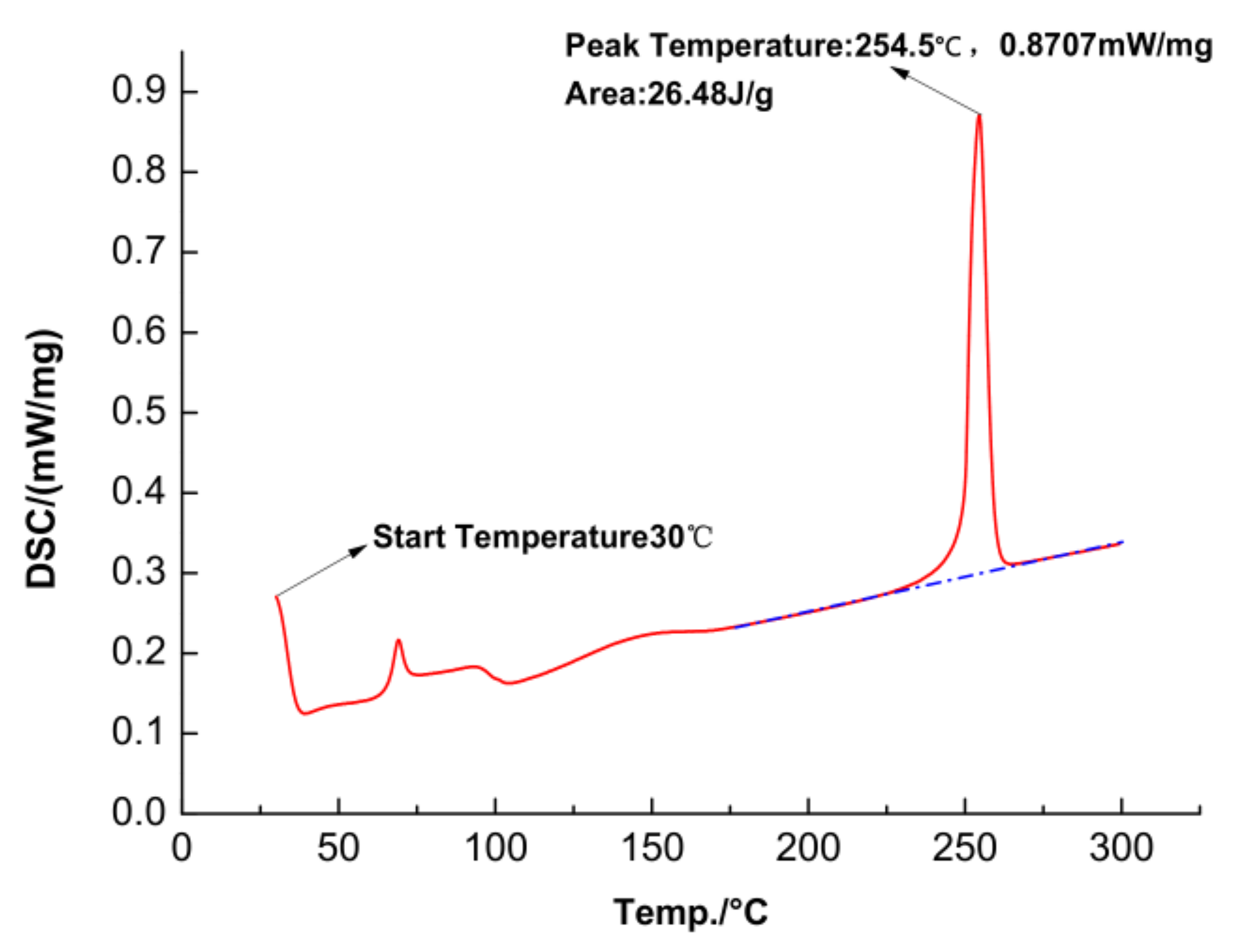

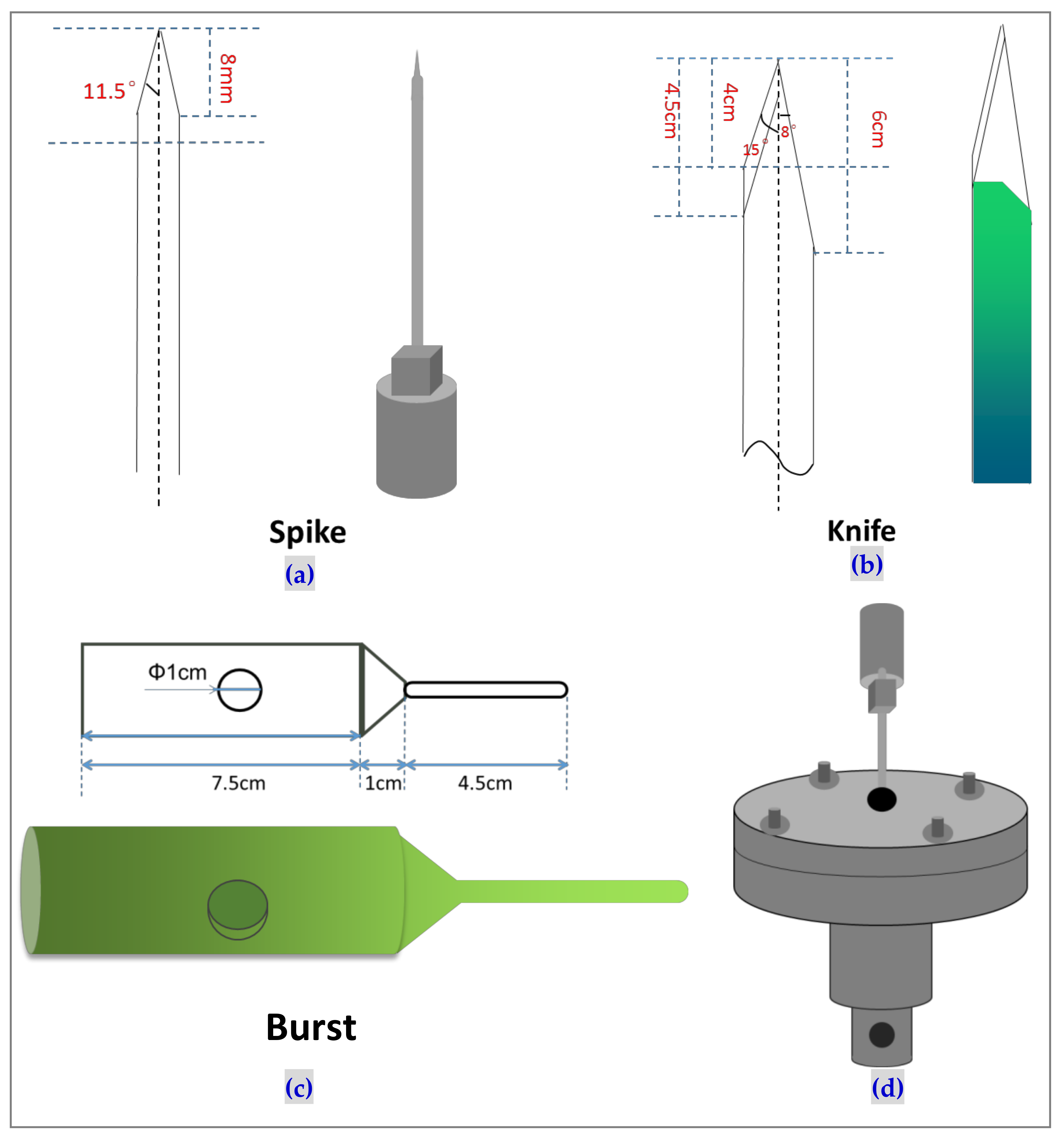

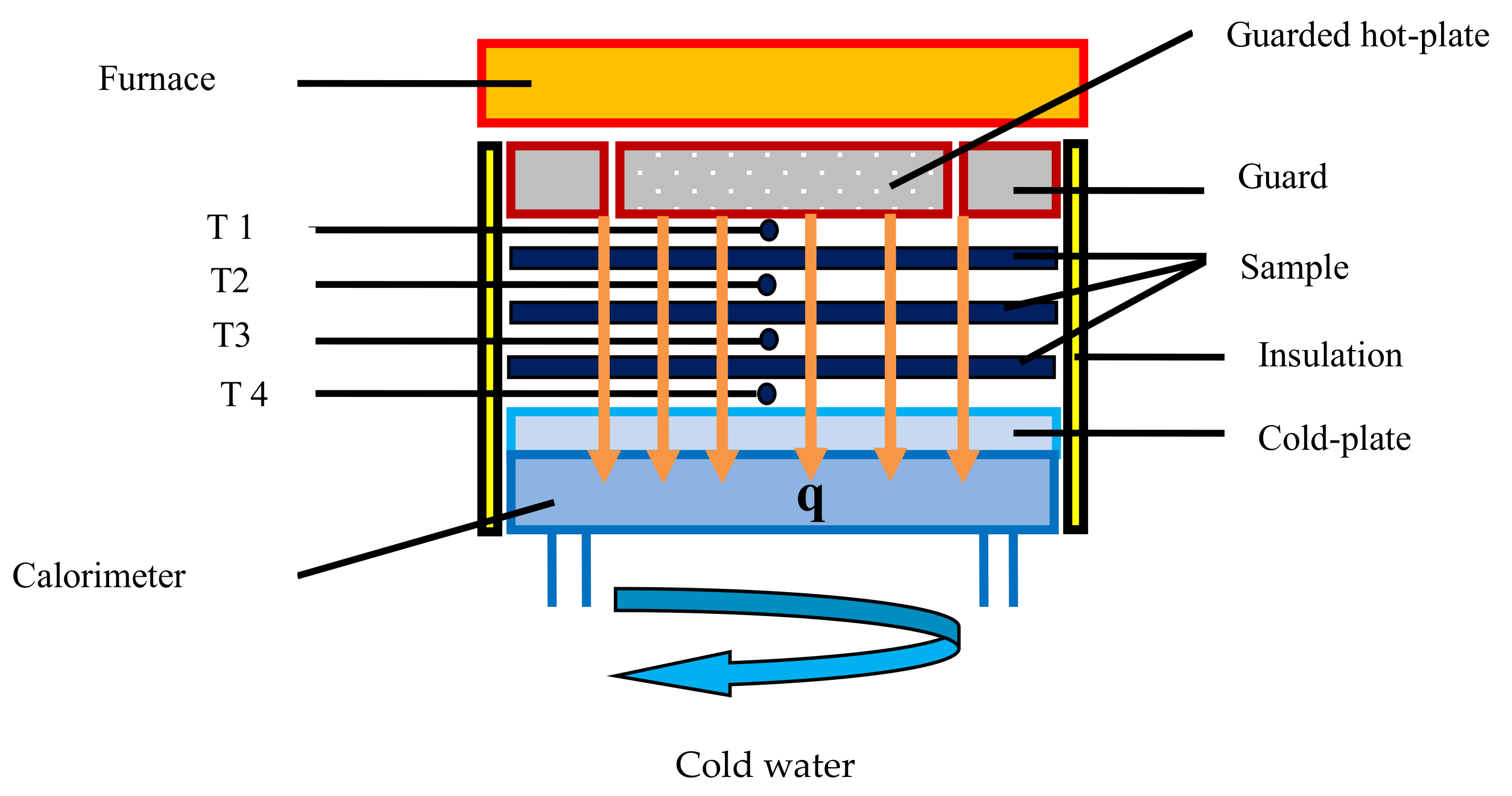
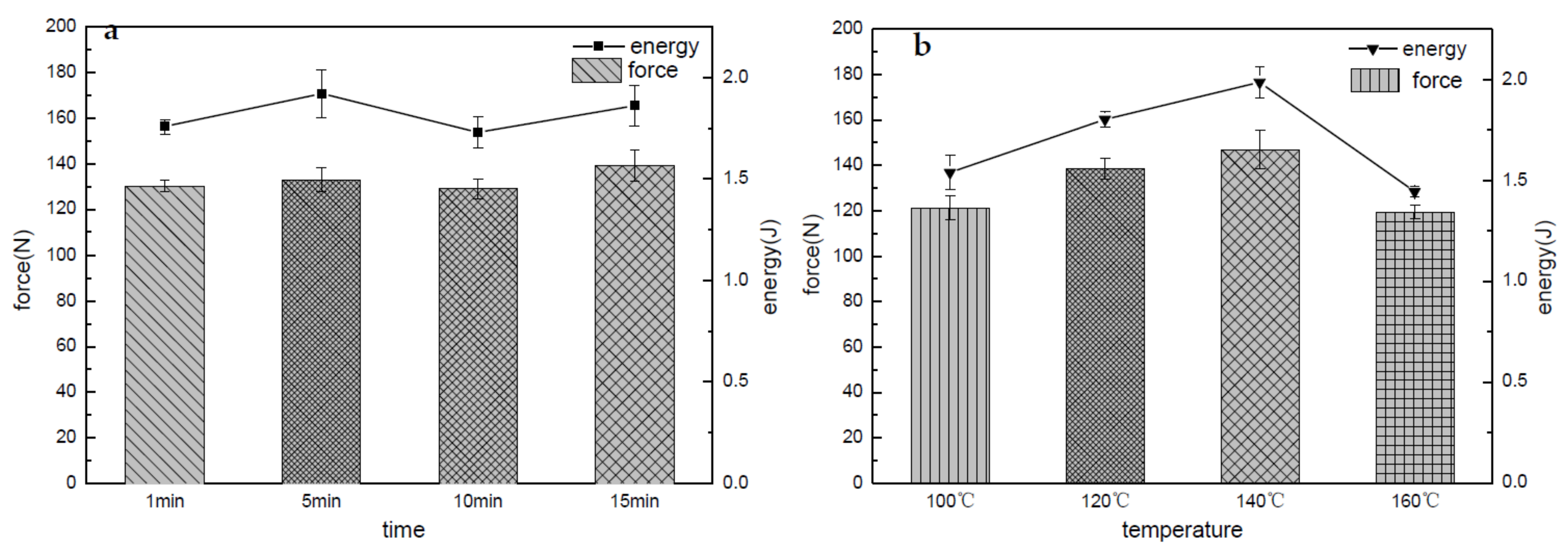
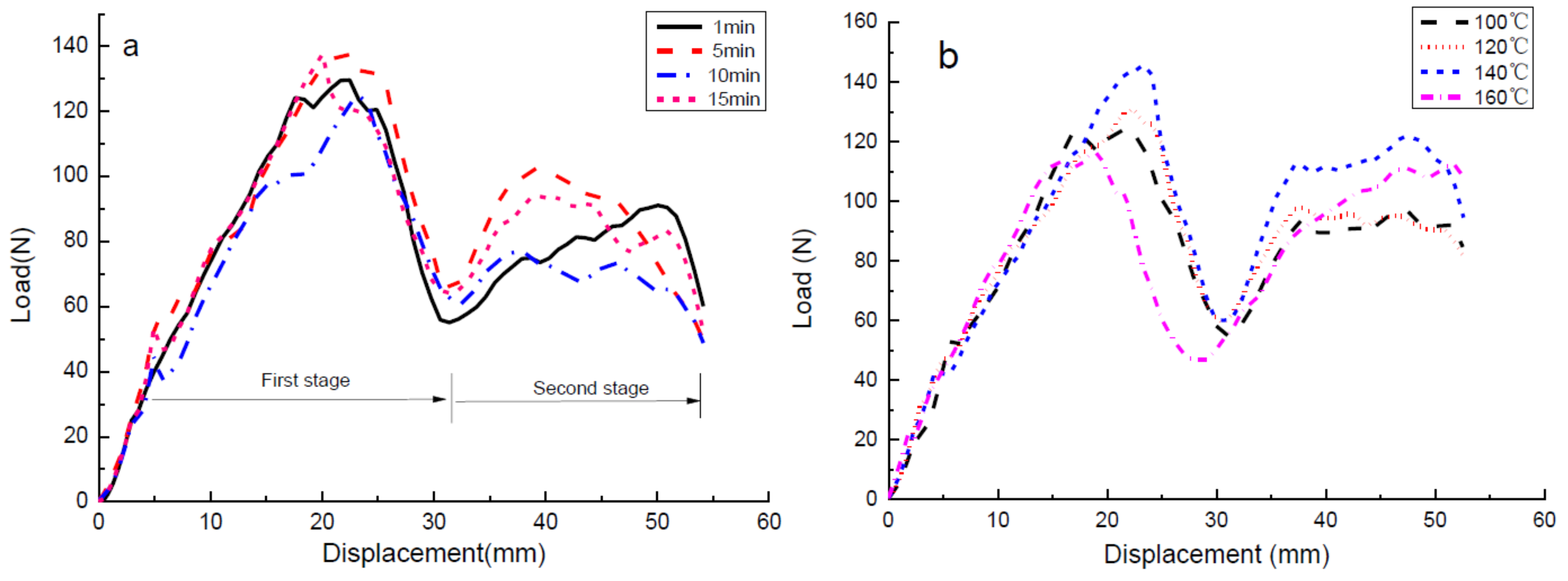
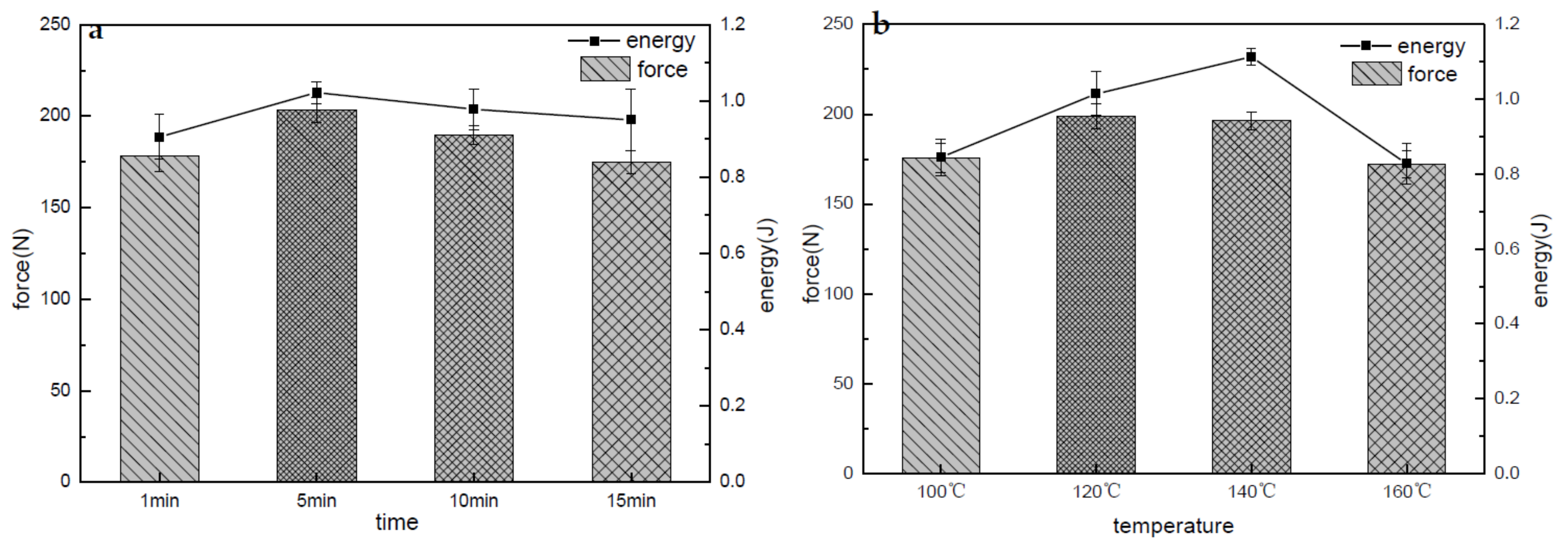
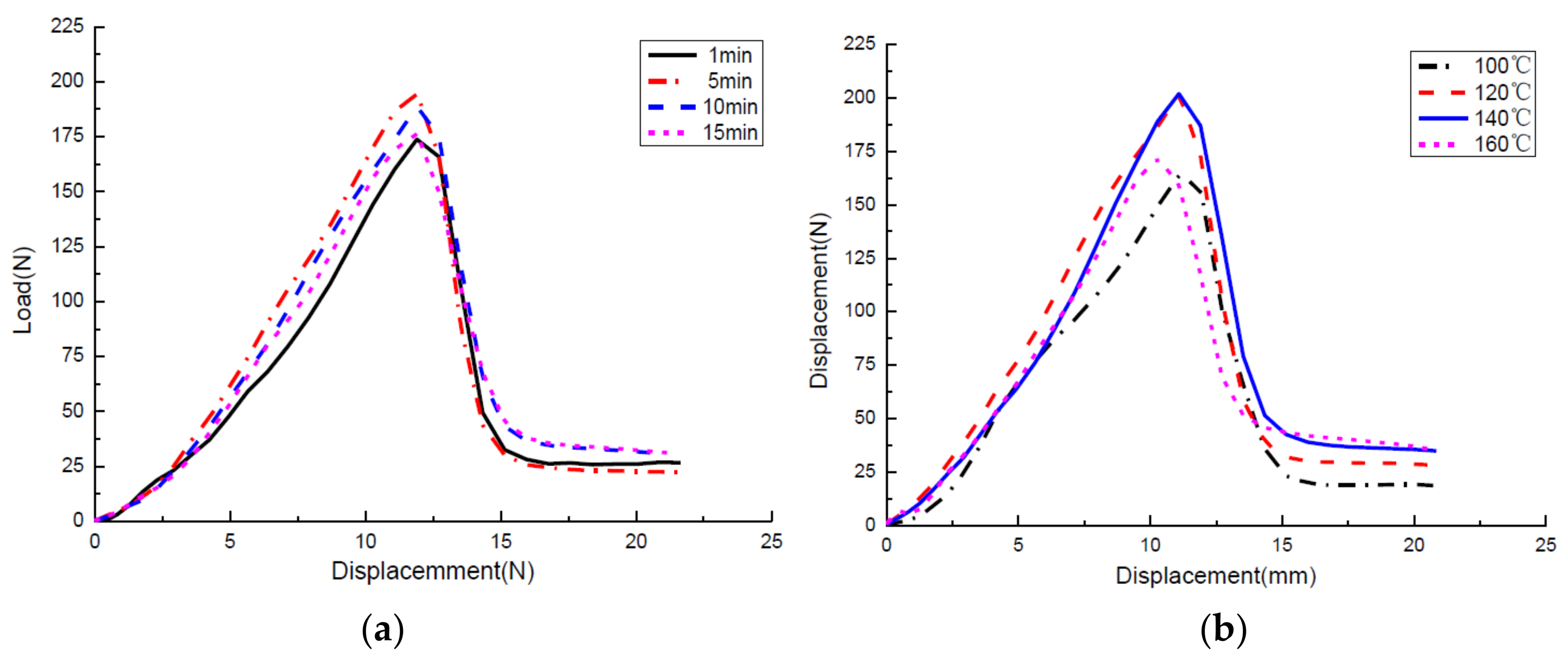
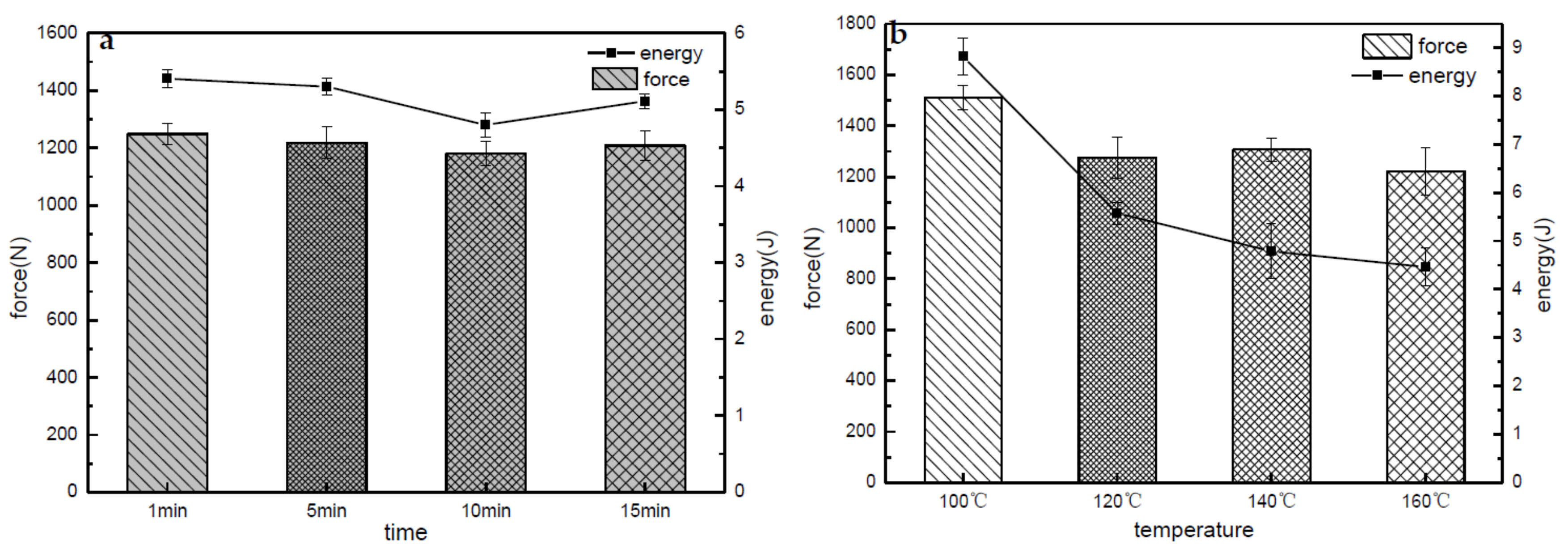
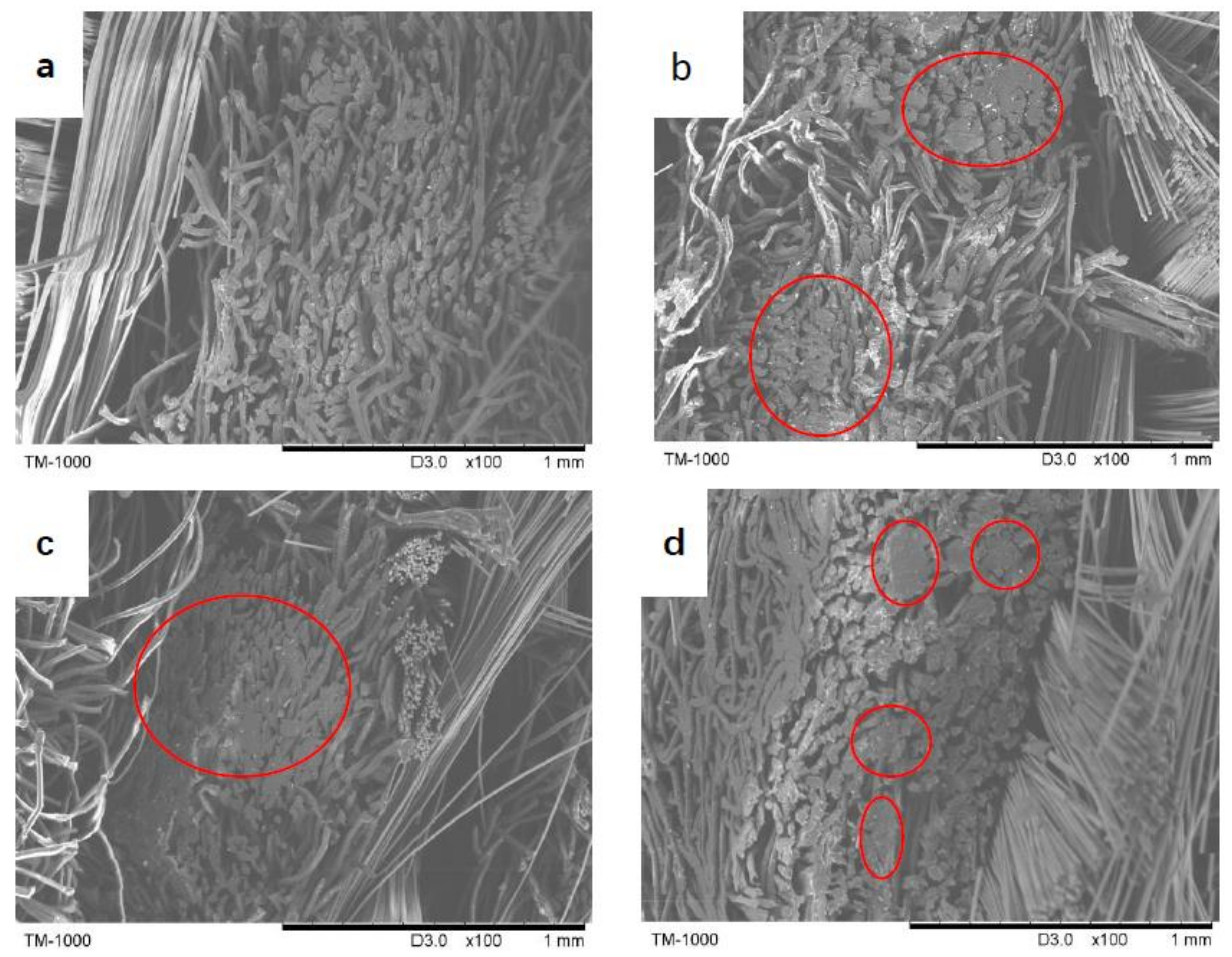
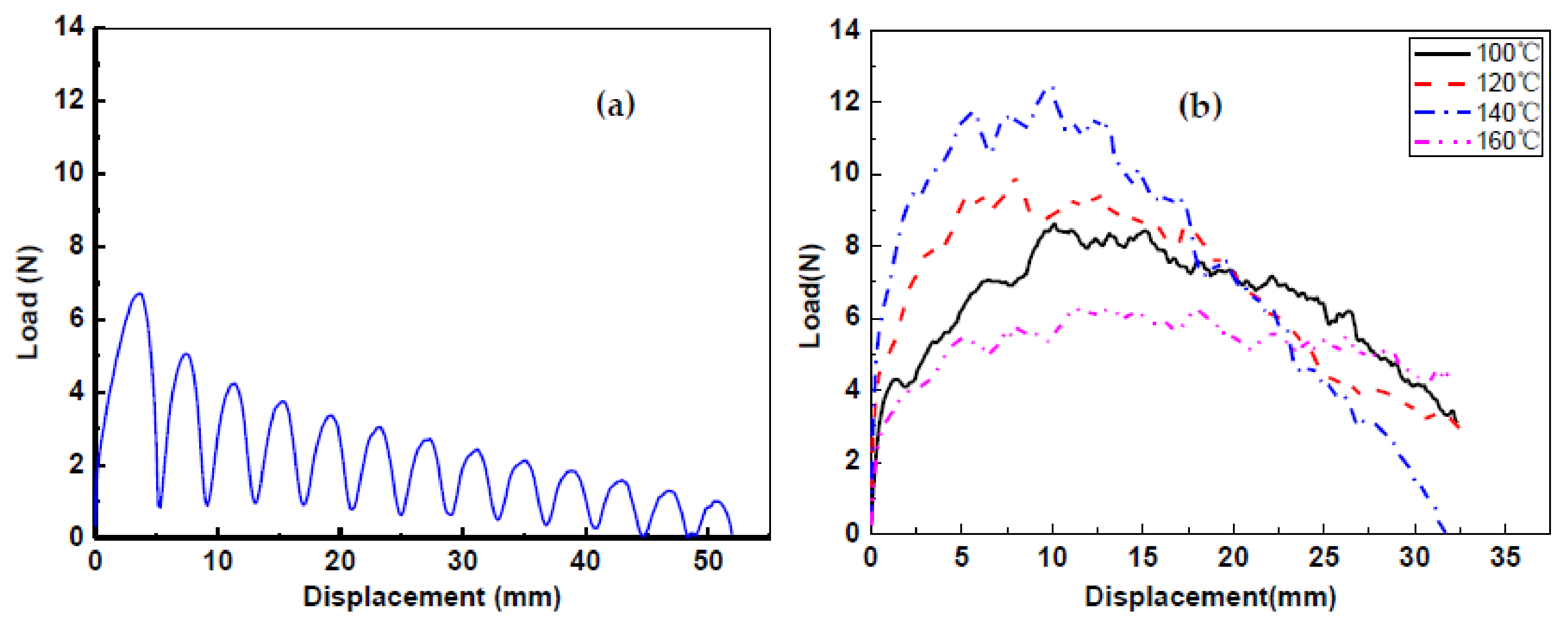
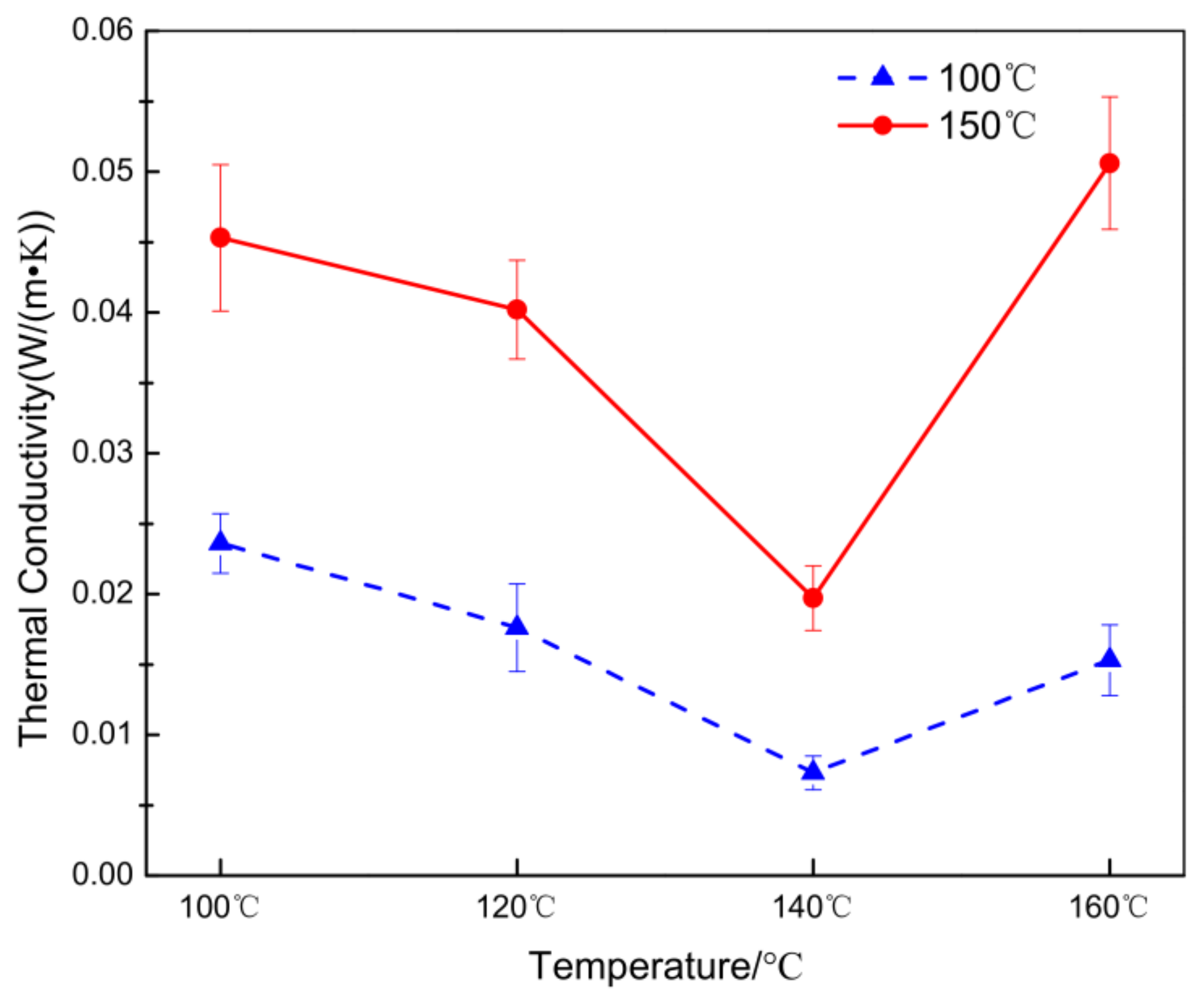
| Sample Code | Temperature (°C) | Time (min) | Thickness (mm) | AD (g/m2) |
|---|---|---|---|---|
| 1 | 100 | 5 | 3.57 | 1050 |
| 2 | 120 | 5 | 3.56 | 1050 |
| 3 | 140 | 5 | 3.55 | 1050 |
| 4 | 160 | 5 | 3.55 | 1050 |
| 5 | 120 | 1 | 3.57 | 1050 |
| 6 | 120 | 5 | 3.56 | 1050 |
| 7 | 120 | 10 | 3.55 | 1050 |
| 8 | 120 | 15 | 3.54 | 1050 |
© 2018 by the authors. Licensee MDPI, Basel, Switzerland. This article is an open access article distributed under the terms and conditions of the Creative Commons Attribution (CC BY) license (http://creativecommons.org/licenses/by/4.0/).
Share and Cite
Li, T.-T.; Zhang, X.; Peng, H.; Jiang, Q.; Dai, W.; Lou, C.-W.; Lin, J.-H. Thermally Bonded PET–Basalt Sandwich Composites for Heat Pipeline Protection: Preparation, Stab Resisting, and Thermal-Insulating Properties. Appl. Sci. 2018, 8, 510. https://doi.org/10.3390/app8040510
Li T-T, Zhang X, Peng H, Jiang Q, Dai W, Lou C-W, Lin J-H. Thermally Bonded PET–Basalt Sandwich Composites for Heat Pipeline Protection: Preparation, Stab Resisting, and Thermal-Insulating Properties. Applied Sciences. 2018; 8(4):510. https://doi.org/10.3390/app8040510
Chicago/Turabian StyleLi, Ting-Ting, Xiayun Zhang, Haokai Peng, Qian Jiang, Wenna Dai, Ching-Wen Lou, and Jia-Horng Lin. 2018. "Thermally Bonded PET–Basalt Sandwich Composites for Heat Pipeline Protection: Preparation, Stab Resisting, and Thermal-Insulating Properties" Applied Sciences 8, no. 4: 510. https://doi.org/10.3390/app8040510
APA StyleLi, T.-T., Zhang, X., Peng, H., Jiang, Q., Dai, W., Lou, C.-W., & Lin, J.-H. (2018). Thermally Bonded PET–Basalt Sandwich Composites for Heat Pipeline Protection: Preparation, Stab Resisting, and Thermal-Insulating Properties. Applied Sciences, 8(4), 510. https://doi.org/10.3390/app8040510






